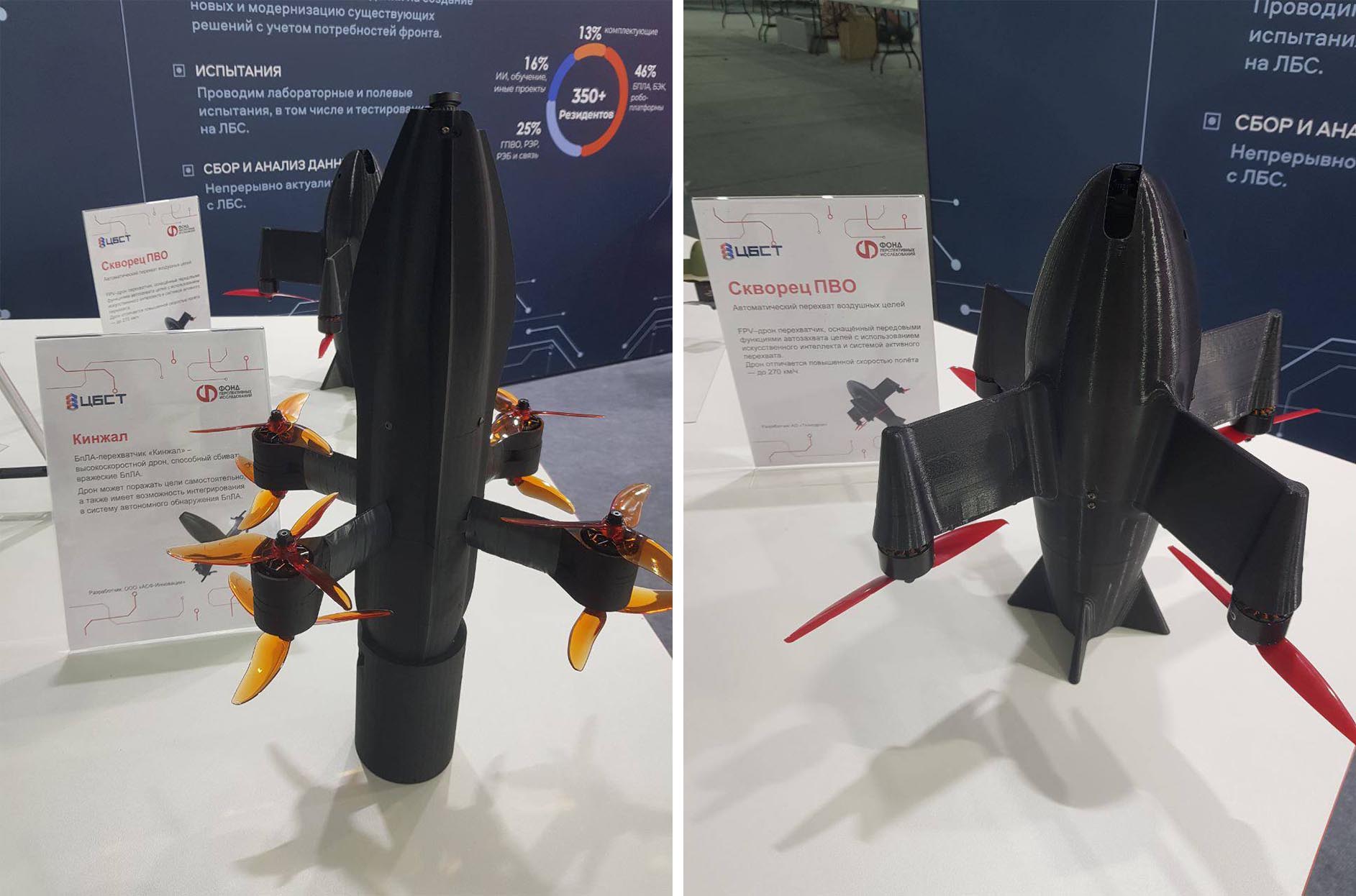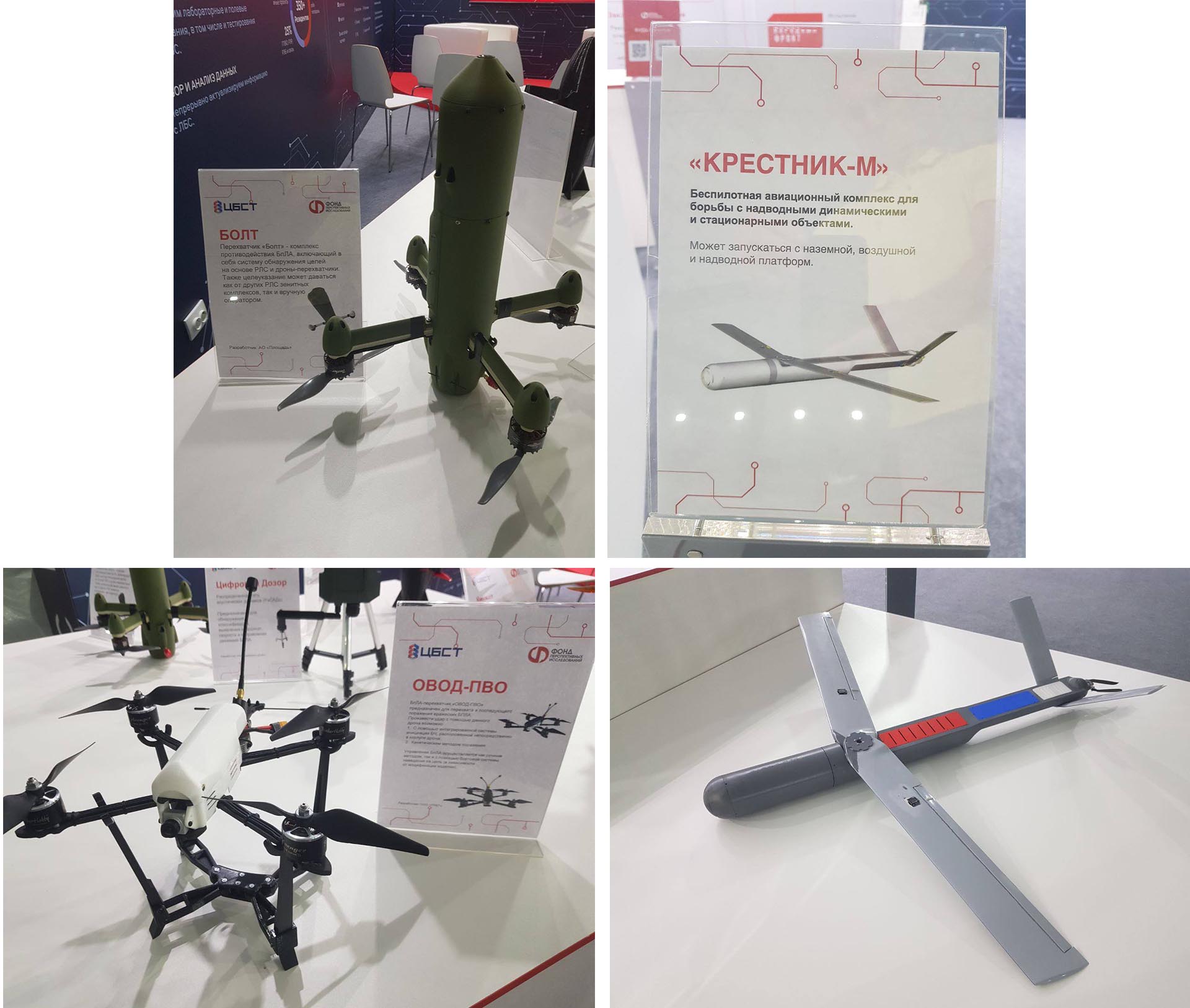The Russian Center for Unmanned Systems and Technologies (CBST) has launched a series of dedicated intercept drones. The demonstration was held at the 2025 Archipelago Forum in Skolkovo, showcasing various models with different aerodynamic and design solutions, similar to those used by Ukrainian intercept drones.
At the exhibition, CBST showcased the Skvorets anti-aircraft intercept drone, which performs vertical takeoff and features an AI-based integrated target capture system, with a maximum speed of 270 km/h.

(Russian Kinzhal and Skvorets PVO intercept drones.)
The development company also demonstrated the faster Kinzhal intercept drone, with a top speed of 300 km/h. Reportedly, this drone is capable of independently attacking targets and can be integrated into autonomous drone detection systems. Another model is the “BOLT” intercept drone, which, according to official information, is part of a drone countermeasure complex. This complex includes a radar-based target detection system and intercept drones. Targeting can be provided by other radars from air defense systems or manually by the operator.
In addition to the airborne interceptors, CBST also showcased the Krestnik-M maritime mobile target intercept drone. It can be launched from land, sea, and air platforms. Aerodynamically, the drone features a V-tail and straight wings, and it opens up after dropping or launching.

(Bolt, Krestnik-M, and Ovod-PVO intercept drones)
Furthermore, a quadcopter-type anti-aircraft drone “Ovod-PVO” was showcased, designed to intercept and subsequently destroy enemy drones. It can be equipped with kinetic warheads and an integrated warhead launch system.
Earlier, media reports mentioned the discovery of portable intercept drones in service with the Federal Security Service (FSB), responsible for the security of the Russian President.

